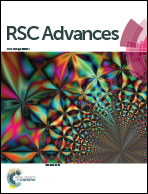Polymorphism/pseudopolymorphism of metal–organic frameworks composed of zinc(ii) and 2-methylimidazole: synthesis, stability, and application in gas storage†
Abstract
This paper reports on the synthesis and stability of a polymorphic system of a metal–organic framework (MOF) composed of zinc(II) and 2-methylimidazole, as well as its potential applicability in gas storage. Three polymorphs/pseudopolymorphs, ZIF-8, ZIF-L, and dia(Zn), are discussed in this work. It was found that the synthesis of dia(Zn) with a crystal morphology of hexagonal nanosheets requires a catalyst (NH4OH, CH3COOH, or HCOONa), and a synthesis temperature of 60 °C. In contrast, the synthesis of ZIF-8 and ZIF-L can be conducted in the absence of a catalyst and at room temperature. This suggests that the activation energy of dia(Zn) exceeds that of ZIF-8 and ZIF-L. The three crystals were subjected to hydrothermal treatment at 100 °C to evaluate their stability. ZIF-8 presented the highest hydrothermal stability, whereas ZIF-L presented the lowest. Nitrogen physisorption performed at 77 K suggests that the microporosity of ZIF-8 exceeds that of ZIF-L and dia(Zn), which were almost nonporous. Interestingly, CO2 thermogravimetric analysis revealed that the CO2 adsorption of ZIF-L and dia(Zn) at 323.15 K is on par with that of ZIF-8, which implies that the flexibility of the ZIF-L and dia(Zn) framework increased considerably with temperature. Our results suggest that nonporous MOFs might be useful for gas adsorption or gas separation at ambient or high temperature.



 Please wait while we load your content...
Please wait while we load your content...